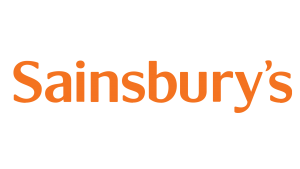In the latest of our ‘Collaborating for a purpose’ case studies, we explore the creation and successes of the Data Sharing Agreement (DSA). An innovative project that brings a number of key retailers together to share information and data on retail crime to reduce offending, the DSA is starting to reap rewards for all involved.
We speak to some of the key stakeholders involved in the DSA – Gareth Ward, Director of Retail and Shopping Centres at Mitie, Clint Reid, Head of Corporate Security at Marks & Spencer and Andrew Needham, Head of Retail Loss & Costs at the Co-op:
Why was the DSA created?
Gareth (Mitie) – At Mitie, we strongly believe that true collaboration drives results. We strive to innovate and drive best practice with all of our partners. From the insights generated out of the Security Operations Centres we run on behalf of a number of key national retailers, we were able to see that there were a number of offenders actively targeting more than one retailer. However, because of Data Protection laws, we were unable to share this information as quickly as we needed to – inhibiting us from being able to prevent criminality form occurring.
It was clear to us that a greater level of collaboration was needed – we engaged with each retailer, and it was agreed that we should develop a DSA between the parties.
Were there any difficulties in creating the DSA?
Gareth (Mitie) – Yes! Although we were all very much in agreement about what we needed to do and what we wanted to achieve, making it happen was not an easy feat! We had a very clear goal – to share personal information on individuals known to be committing crime – however, the actual practicalities of this and the documenting of the processes took quite a while to finalise.
Legal teams from all parties were involved in producing the agreement, and there were a number of versions created, shared, reviewed and updated before we got to the point where everyone was happy with its content.
A big consideration was compliance with the General Data Protection Regulations (GDPR). At the time, it was a challenging – and sometimes frustrating – process, but we all strongly felt that it was the right thing to do and were committed to making it happen. We are now starting to see the benefits of the hard work undertaken by everyone involved.
On the subject of ‘benefits’, what difference has the DSA made?
Andy (Co-op) – Collectively, we have identified nearly 100 offenders who are committing offences against two or more retailers. The work of the Joint Retail Crime Task Force has allowed us to target the offenders causing the most harm and the pooling of data and resources has enabled us to share knowledge with local stores. We have been able to deter crime and build comprehensive casefiles containing evidence from all affected retailers, e.g., CCTV, business impact statements etc and share this with the Police. A great example of this relates to a prolific offender committing till snatches. He was recently sentenced to 52 weeks imprisonment, due in part to the timeliness with which evidence was shared with the Police evidencing the totality of his offending. At the time of arrest, we were able to provide all the evidence to the Police in one complete package, which resulted in him being remanded in custody, rather than released, and subsequently receiving a custodial sentence.
Away from the numbers, what the DSA is bringing to me is the ability to openly share threats and vulnerabilities that we are facing into and has developed a wider pool of expertise for possible solutions. The power of being able to speak to a peer in industry, with no concerns over commercial advantage and simply discussing shared problems has been immense.
Gareth (Mitie) – Our retailers always felt strongly that there were crossovers in offending and would often anecdotally be told this following Police arrests. The DSA provides confidence that we know the totality of offender behaviours and are able to collectively target those offenders who are active against more than one retailer. It provides an early warning of offenders who have come to the attention of other retailers and enables us to take timely action against them
Clint (M&S) – There has been a call to arms for collaboration and partnership for many years, the DSA is enabling us to do this and building more of a community response. We are becoming a family of retailers, at least in the security world! This can only be a good thing as it helps our stores become hostile environments for offenders, and therefore safer environments for colleagues and customers.
The results so far indicate that we are on the right path in identifying and assessing high risk offenders and offending. This work is not a short-term project, it is a new way of working amongst us and one that provides me with great excitement about the impact we can collectively have.
So, what does success look like in the next 12 months?
Clint (M&S) – Alongside continuing the great work on offenders, I want to see us collaborating more on areas such as Horizon Scanning and assessing future risks to retailers, and then collectively instigating activities to manage them effectively. I would like more transparency across retailers regarding ‘what works’ in preventing and designing out crime and how long a crime prevention initiative provides a deterrent to offenders.
Andy (Co-op) – I would like to expand on our sharing of data and hope we can reach a point whereby we are sharing information such as shrinkage on a regular basis, working as an industry to positively impact upon it through the use of appropriate technology, security practices and sharing knowledge.
Finally, Gareth where are you taking this next?
We can’t stand still. We have made a great start to working with each other, but this now needs to be ‘business as usual’ with practices expanded across the entirety of the retail sector.
The areas highlighted by some of the stakeholders form part of our ongoing work. Internally we will be working with our partners to establish similar data sharing agreements, for example, we can see that the framework would work well across the various shopping centres we provide security services to.
Externally, we are working with the National Business Crime Centre (NBCC) and the National Business Crime Solution (NBCS) to help connect industry and Policing to allow us to collectively target offenders and offending that poses the highest risk to retailers. We want to deliver an intelligence led, and risk focussed approach to manging Retail Crime. Access to data is essential to this, but equally so is partnerships and a willingness to openly collaborate.
As I said at the start, ideas are easy, putting them into practice is the hard bit. As a partnership we are committed to creating safe retail environments. This is achieved through targeting people and places based on an assessment of risk. The more comprehensive this assessment is, the better our deployment of resources – both people and technology – can be.
Intelligent security, and science of service is why we are trusted by our partners. We will continue to innovate and use intelligence to make a positive impact for our retail partners.







